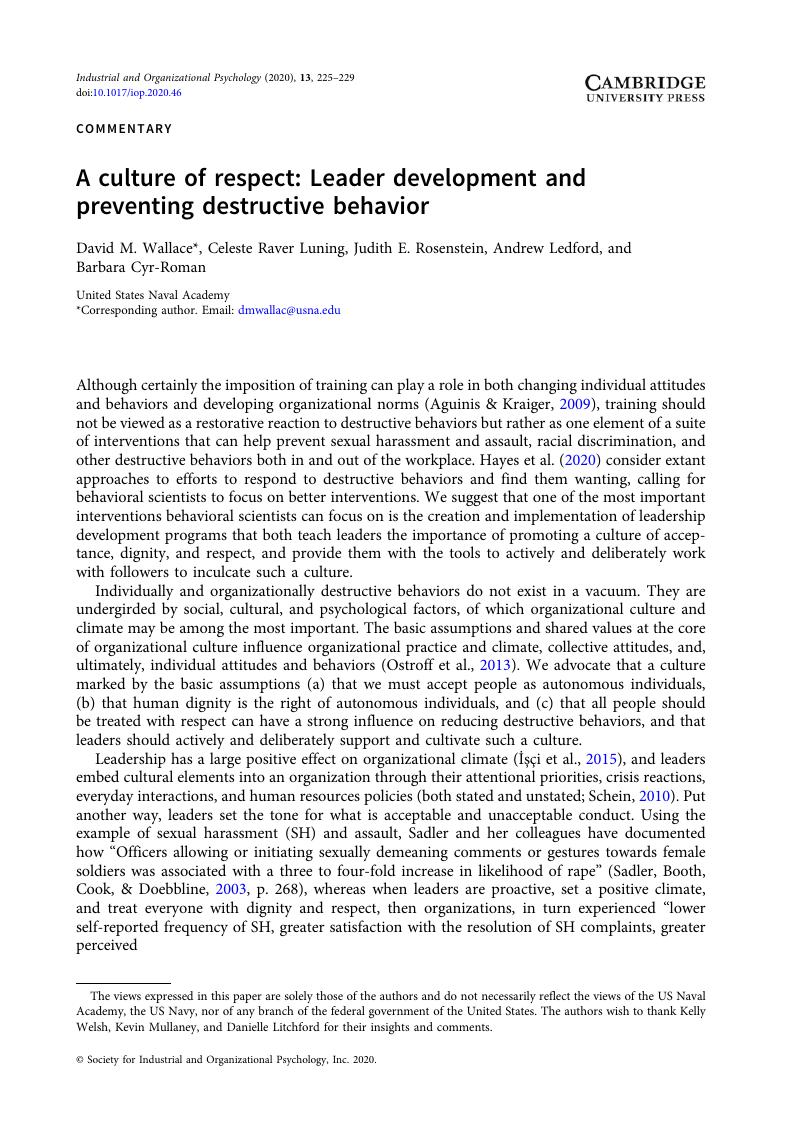Article contents
A culture of respect: Leader development and preventing destructive behavior
Published online by Cambridge University Press: 28 July 2020
Abstract

- Type
- Commentaries
- Information
- Copyright
- © Society for Industrial and Organizational Psychology, Inc. 2020
Footnotes
The views expressed in this paper are solely those of the authors and do not necessarily reflect the views of the US Naval Academy, the US Navy, nor of any branch of the federal government of the United States. The authors wish to thank Kelly Welsh, Kevin Mullaney, and Danielle Litchford for their insights and comments.
References
- 1
- Cited by




